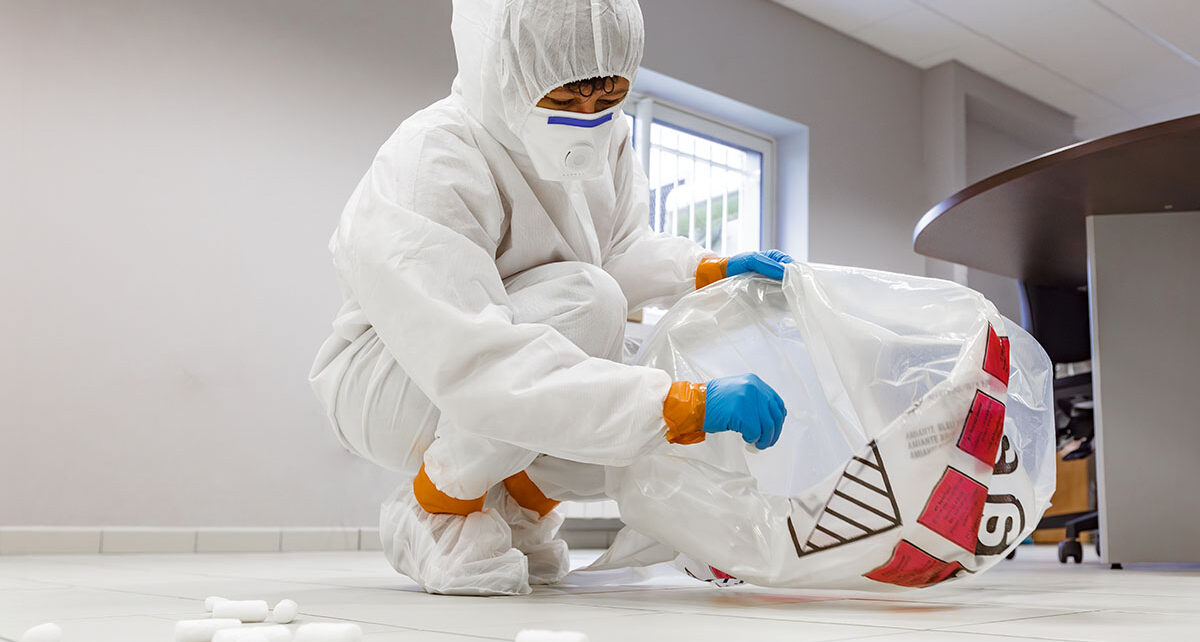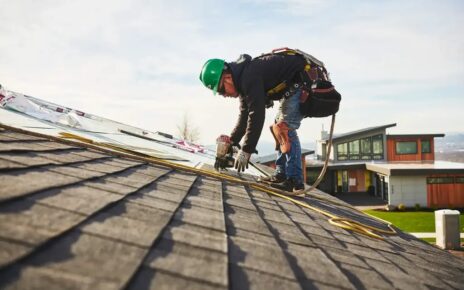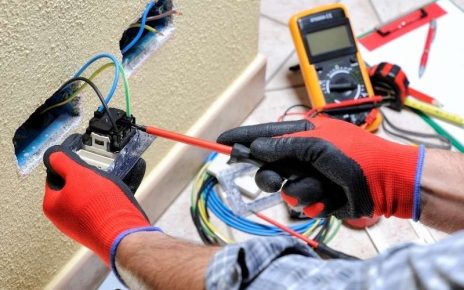What is Asbestos?
Asbestos is a group of minerals made of tiny fibers. These fibers are strong and resistant to heat, which is why they were used in many building materials. However, asbestos can be very dangerous when it breaks down into dust. When people breathe in this dust, it can lead to serious health problems.
Health Risks Associated with Asbestos
Exposure to asbestos can cause several health issues, including:
- Asbestosis: A lung disease that makes it hard to breathe.
- Lung Cancer: A serious illness that can develop over time.
- Mesothelioma: A rare cancer that affects the lining of the lungs and abdomen.
Common Sources of Asbestos in Homes
Asbestos can be found in many places within older homes. Common sources include:
- Insulation: Often found around pipes and in attics.
- Floor Tiles: Some older vinyl tiles contain asbestos.
- Roofing Materials: Shingles and other roofing products may have asbestos.
Understanding these risks is crucial for protecting veterans and their families from potential exposure.
Identifying Asbestos in Your Home
Signs of Asbestos Presence
Identifying asbestos in a home can be challenging. Here are some signs that may indicate its presence:
- Age of the Home: Homes built before the 1980s are more likely to contain asbestos.
- Damaged Materials: Look for crumbling or damaged insulation, tiles, or roofing materials.
- Unusual Textures: Some textured paints and plaster may contain asbestos.
Areas in Homes Where Asbestos is Commonly Found
Asbestos can be located in various parts of a home. Common areas include:
- Attics and Basements: Insulation around pipes and ducts.
- Flooring: Vinyl tiles and the adhesive used to install them.
- Ceilings: Popcorn ceilings and textured finishes.
Professional Asbestos Inspection Services
If there are concerns about asbestos, hiring a professional is crucial. Here’s what to consider:
- Certified Inspectors: Ensure the inspector is certified and experienced in asbestos detection.
- Comprehensive Testing: A good service will test multiple areas of the home.
- Detailed Report: Expect a thorough report outlining any findings and recommendations for next steps.
Asbestos Protection Measures for Veterans
Importance of Asbestos Protection
Asbestos can be very dangerous, especially for veterans who may have been exposed to it during their service. Protecting against asbestos is crucial for several reasons:
- Health Risks: Asbestos exposure can lead to serious health problems, including lung diseases and cancer.
- Peace of Mind: Knowing that one’s home is safe from asbestos can provide comfort and reduce anxiety.
- Long-Term Safety: Taking steps to protect against asbestos ensures a safer living environment for veterans and their families.
Steps to Take for Asbestos Safety
Veterans can take several important steps to ensure their homes are safe from asbestos:
- Inspect the Home: Regularly check for signs of asbestos, especially in older homes.
- Use Protective Gear: If handling materials that may contain asbestos, always wear proper safety equipment, such as masks and gloves.
- Educate Family Members: Make sure everyone in the household understands the risks of asbestos and knows how to stay safe.
Veteran-Specific Asbestos Protection Programs
There are programs specifically designed to help veterans protect themselves from asbestos:
- Government Assistance: Various government programs offer support and resources for veterans dealing with asbestos exposure.
- Non-Profit Organizations: Many non-profits provide information and assistance to veterans regarding asbestos safety.
- Community Workshops: Local organizations often hold workshops to educate veterans about asbestos risks and safety measures.
DIY Asbestos Testing and Safety Precautions
Home Asbestos Testing Kits
When it comes to checking for asbestos in a home, using a testing kit can be a practical option. Here are some key points to consider:
- Purchase a Reliable Kit: Look for kits that are certified and have good reviews.
- Follow Instructions Carefully: Each kit comes with specific steps. It’s important to read and follow them closely to ensure accurate results.
- Send Samples to a Lab: Most kits require you to send samples to a lab for analysis. Make sure to use the provided packaging to avoid contamination.
Safety Gear for Handling Asbestos
If asbestos is suspected in the home, safety is crucial. Here are some essential safety items:
- Respirator Masks: These masks help filter out harmful particles and should be worn at all times when handling suspected asbestos.
- Protective Clothing: Wear disposable coveralls to prevent asbestos fibers from sticking to clothing.
- Gloves: Use heavy-duty gloves to protect hands from any sharp materials or harmful substances.
When to Call a Professional
While DIY testing can be helpful, there are times when it’s best to seek professional help:
- Large Areas of Concern: If a significant area of the home is suspected to contain asbestos, it’s safer to hire experts.
- Renovation Plans: Before starting any renovation, a professional inspection can ensure safety.
- Health Symptoms: If anyone in the home is experiencing health issues related to asbestos exposure, immediate professional assistance is necessary.
Hiring Professional Asbestos Removal Services
Choosing a Certified Asbestos Removal Company
When it comes to removing asbestos, it is crucial to select a company that is certified and experienced. Here are some key points to consider:
- Certification: Ensure the company has the necessary licenses and certifications to handle asbestos safely.
- Experience: Look for companies with a proven track record in asbestos removal.
- Reputation: Check reviews and ask for references to gauge the company’s reliability.
Cost of Professional Asbestos Removal
The cost of hiring professionals for asbestos removal can vary widely. Factors that influence the price include:
- Size of the Area: Larger areas with more asbestos will generally cost more to remove.
- Type of Asbestos: Different types of asbestos may require different removal methods, affecting the cost.
- Location: Prices can vary based on where you live, with some regions having higher labor costs.
What to Expect During Asbestos Removal
Understanding the process can help ease concerns. Here’s what typically happens:
- Initial Assessment: The team will inspect the area to determine the extent of the asbestos.
- Containment: They will seal off the area to prevent asbestos fibers from spreading.
- Removal Process: Trained professionals will carefully remove the asbestos, following safety protocols.
- Final Inspection: After removal, the area will be checked to ensure it is safe for re-entry.
Legal Rights and Resources for Veterans
Veterans’ Rights Regarding Asbestos Exposure
Veterans have specific rights when it comes to asbestos exposure. These rights include:
- Compensation: Veterans may be eligible for financial compensation if they have health issues related to asbestos exposure during their service.
- Healthcare Access: They can access healthcare services through the Department of Veterans Affairs (VA) for asbestos-related illnesses.
- Legal Protections: Veterans are protected under various laws that ensure they receive fair treatment and support for asbestos-related claims.
Legal Assistance for Asbestos-Related Issues
Veterans facing asbestos-related problems can seek legal help. Here are some options:
- Veterans Service Organizations: Many organizations offer free legal advice and support for veterans dealing with asbestos claims.
- Pro Bono Legal Services: Some lawyers provide free services to veterans, especially for cases involving asbestos exposure.
- Legal Aid Clinics: Local legal aid clinics may offer assistance to veterans needing help with asbestos-related legal issues.
Resources for Asbestos-Affected Veterans
There are several resources available for veterans affected by asbestos:
- VA Health Care: Veterans can access specialized healthcare services for asbestos-related conditions through the VA.
- Support Groups: Joining support groups can help veterans connect with others facing similar challenges and share experiences.
- Educational Materials: Various organizations provide information on asbestos risks and rights, helping veterans understand their situation better.
Preventing Asbestos Exposure During Home Renovations
Safe Renovation Practices
When planning renovations, it is crucial to take steps to avoid asbestos exposure. Here are some safe practices to follow:
- Research: Before starting any renovation, check if your home was built before 1980, as it may contain asbestos.
- Plan Ahead: Create a detailed plan for your renovation, including areas that may need special attention for asbestos.
- Notify Others: Inform family members and workers about potential asbestos risks before beginning the project.
Identifying Asbestos Before Renovation
Identifying asbestos in your home is essential to ensure safety. Consider these steps:
- Visual Inspection: Look for materials that may contain asbestos, such as old insulation, floor tiles, or ceiling tiles.
- Sample Testing: If you suspect asbestos, consider using a home testing kit or hiring a professional to take samples.
- Documentation: Keep records of any materials tested for asbestos and their results.
Hiring Asbestos-Safe Contractors
If renovations involve areas with potential asbestos, hiring the right professionals is vital. Here’s what to do:
- Check Credentials: Ensure the contractor is certified in asbestos removal and has experience in handling such materials.
- Get Estimates: Obtain multiple quotes to compare costs and services offered by different contractors.
- Ask Questions: Inquire about their safety measures and procedures for handling asbestos during renovations.
Health Monitoring and Medical Support for Veterans
Regular Health Check-Ups
Veterans should prioritize regular health check-ups to monitor any potential health issues related to asbestos exposure. These check-ups can help in early detection and treatment. Key points include:
- Annual physical exams to assess overall health.
- Lung function tests to check for any respiratory issues.
- Screening for asbestos-related diseases, such as mesothelioma or lung cancer.
Medical Treatments for Asbestos Exposure
If a veteran has been exposed to asbestos, it is crucial to understand the available medical treatments. Options may include:
- Medications to manage symptoms like pain or breathing difficulties.
- Surgery for severe cases, such as removing affected lung tissue.
- Rehabilitation programs to help regain strength and improve quality of life.
Support Groups and Counseling
Veterans dealing with the effects of asbestos exposure can benefit from support groups and counseling. These resources provide:
- Emotional support from others who understand their experiences.
- Information on coping strategies for dealing with health challenges.
- Access to mental health professionals who specialize in trauma and chronic illness.
Government and Non-Profit Support Programs
Government Assistance Programs
Government programs are available to help veterans affected by asbestos. These programs can provide financial aid and resources. Some key options include:
- VA Benefits: Veterans can access health care and disability benefits related to asbestos exposure.
- Compensation Programs: Financial compensation may be available for veterans who have developed health issues due to asbestos.
- Housing Assistance: Programs that help veterans make their homes safer from asbestos hazards.
Non-Profit Organizations Offering Help
Several non-profit organizations focus on supporting veterans dealing with asbestos exposure. They offer various services, including:
- Counseling Services: Emotional support and counseling for veterans and their families.
- Educational Resources: Information on asbestos risks and safety measures.
- Advocacy: Helping veterans navigate the legal and VA medical systems related to asbestos exposure.
How to Apply for Support Programs
Applying for support programs can be straightforward. Here are some steps to follow:
- Gather Documentation: Collect necessary documents, such as military records and medical reports.
- Contact Relevant Agencies: Reach out to government offices or non-profits that specialize in veteran support.
- Complete Applications: Fill out any required forms accurately and submit them on time.
Educating Family Members About Asbestos Risks
Discussing Asbestos Risks with Family
It is crucial for families to have open conversations about the dangers of asbestos. Here are some key points to cover:
- What Asbestos Is: Explain that asbestos is a material once used in many homes and buildings, which can be harmful when disturbed.
- Health Effects: Discuss how exposure to asbestos can lead to serious health issues, including lung diseases and cancer.
- Importance of Awareness: Emphasize that knowing about asbestos helps everyone stay safe, especially during home repairs or renovations.
Safety Measures for Family Members
To protect family members from asbestos exposure, consider these safety measures:
- Avoid Disturbing Old Materials: Advise family members not to touch or disturb old insulation, tiles, or pipes that may contain asbestos.
- Use Protective Gear: If any work is done in areas where asbestos might be present, ensure that proper safety gear is worn, such as masks and gloves.
- Educate on Signs of Asbestos: Teach family members how to recognize potential asbestos-containing materials in the home, such as textured ceilings or old floor tiles.
Educational Resources on Asbestos
Providing family members with resources can enhance their understanding of asbestos risks. Consider the following:
- Books and Pamphlets: Share easy-to-read materials that explain asbestos and its dangers.
- Workshops and Seminars: Encourage participation in local workshops that focus on asbestos awareness and safety.
- Online Resources: Recommend reliable websites that offer information about asbestos and how to handle it safely.
Long-Term Asbestos Management Strategies
Ongoing Asbestos Monitoring
To ensure safety from asbestos, it is crucial to regularly check for its presence in the home. Here are some key steps:
- Schedule Regular Inspections: Have a professional inspect your home every few years, especially if it was built before the 1980s.
- Keep Records: Document any findings and actions taken regarding asbestos. This helps in tracking any changes over time.
- Stay Informed: Keep up with local regulations and guidelines about asbestos management.
Maintaining Asbestos Safety in Older Homes
Older homes often contain asbestos materials. To manage this risk effectively:
- Identify Asbestos-Containing Materials: Know where asbestos might be in your home, such as in insulation, flooring, or roofing.
- Avoid Disturbing Asbestos: If materials are in good condition, it is often safer to leave them undisturbed.
- Seal or Encapsulate: If necessary, consider sealing asbestos materials to prevent fibers from becoming airborne.
Future-Proofing Your Home Against Asbestos
Taking proactive steps can help prevent future asbestos issues:
- Renovate Safely: Always check for asbestos before starting any renovation work.
- Educate Yourself and Others: Learn about asbestos risks and share this knowledge with family and friends.
- Choose Safe Materials: When making repairs or renovations, opt for materials that are free from asbestos.





